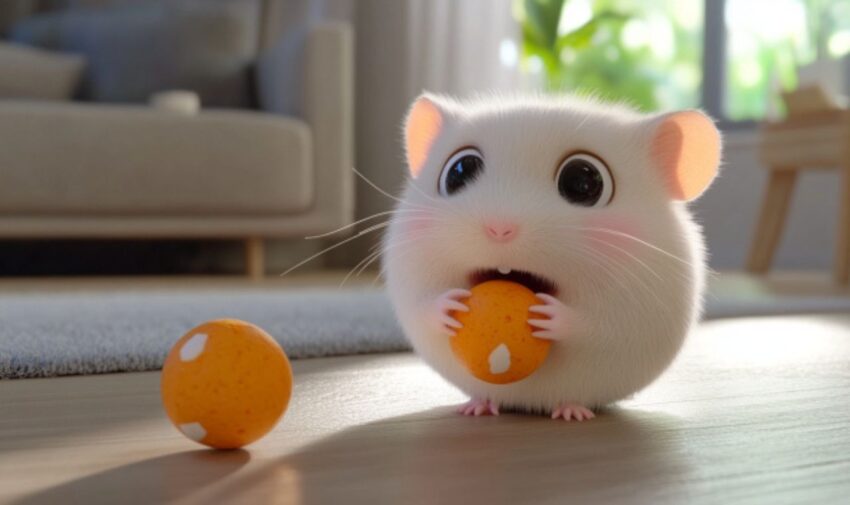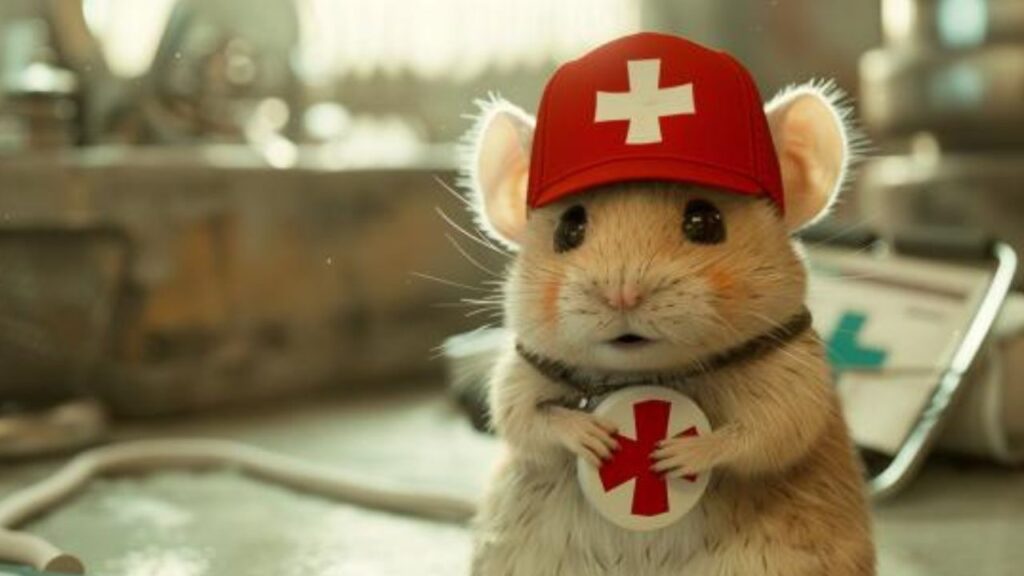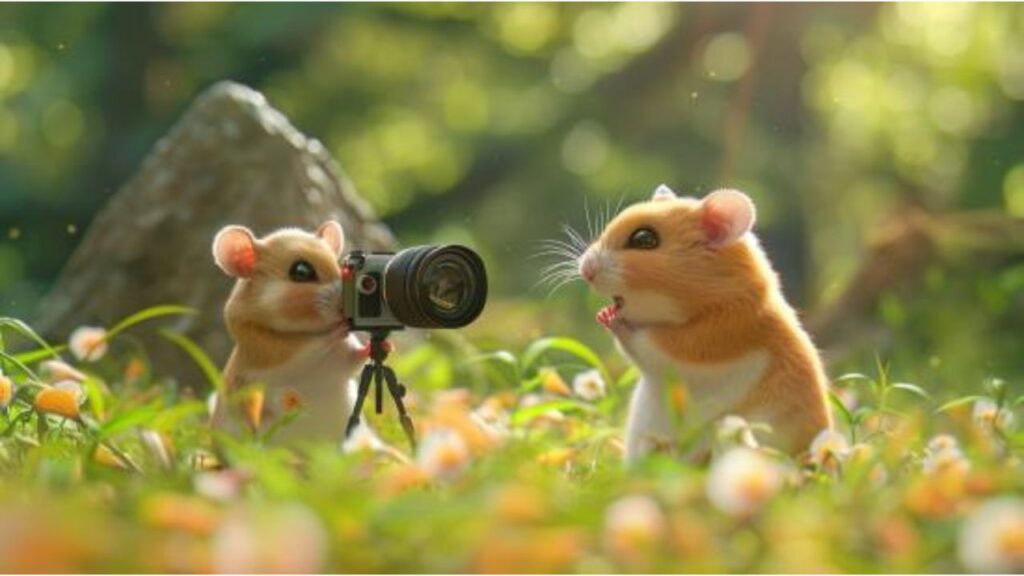Hamsters are naturally active creatures, constantly scurrying, digging, and foraging in the wild. But in captivity, they rely on us to provide stimulating ways to stay active and engaged. One fantastic tool for this is the hamster treat ball—a fun, interactive toy that dispenses treats as your furry friend rolls it around.
Unlike stationary food bowls, treat balls encourage movement and mental engagement, turning snack time into an exciting challenge. As your hamster nudges, pushes, and chases the ball, they engage in self-motivated exercise, meaning they get to control their activity level while reaping the rewards of their efforts.
But why is this important? Regular movement is essential for a hamster’s health, helping to prevent obesity, reduce boredom-related stress, and promote natural foraging behaviors. Without enough physical and mental stimulation, hamsters can develop health issues and destructive habits like bar-biting or excessive chewing. Treat balls provide an easy, enjoyable way to keep your hamster entertained while ensuring they stay fit and active.
In this guide, we’ll explore everything you need to know about hamster treat balls, from how they work to the best ways to introduce them into your pet’s routine. Get ready to watch your little explorer roll their way to a healthier, happier life!
What Are Hamster Treat Balls?
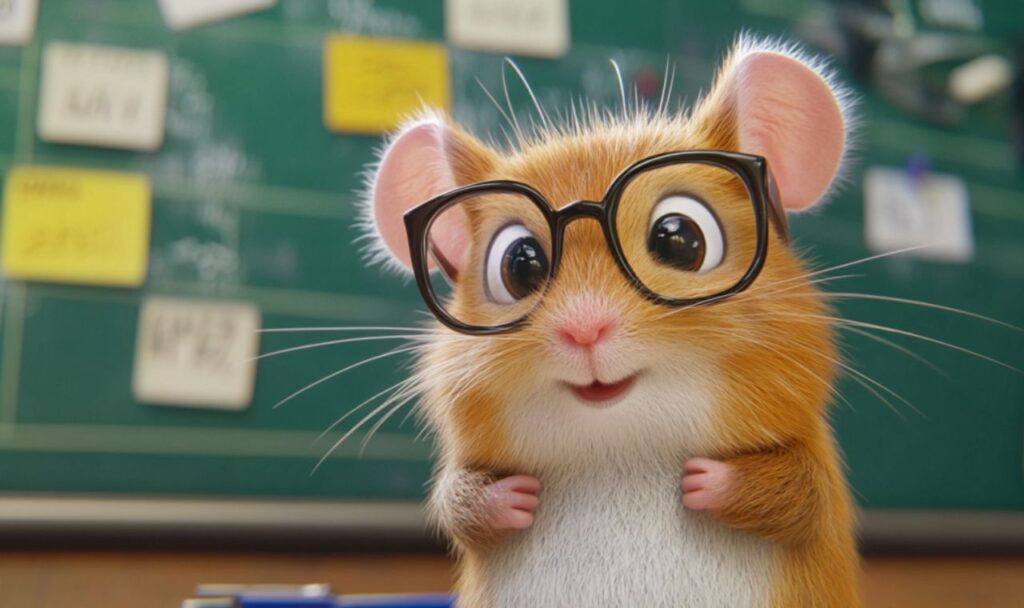
Hamster treat balls are more than just toys—they’re engaging exercise tools that encourage natural foraging instincts and movement. Designed to dispense treats when rolled or nudged, these balls turn snack time into a fun challenge, keeping your hamster both physically and mentally active. Unlike passive food bowls or static treat-dispensing toys, treat balls require effort and curiosity, making them a perfect enrichment tool for your furry friend.
A Fun Spin on Treat Dispensers
A hamster treat ball is a small, hollow ball with openings that allow treats to fall out when pushed or rolled in the right way. As your hamster interacts with the ball, treats are gradually dispensed, rewarding them for movement and persistence.
Unlike treat bowls or hanging food holders, which provide food with no effort required, treat balls require interaction before the reward is given. Other treat-dispensing methods, like puzzle toys, can be static, meaning the hamster doesn’t have to move as much. Treat balls, on the other hand, combine food motivation with exercise, making them an excellent tool for encouraging physical activity.
Hamsters love to explore and forage, and treat balls turn snack time into a rewarding experience. Instead of simply eating from a bowl, they must work for their treats, stimulating their natural instincts and preventing boredom. Plus, watching your hamster chase after a treat ball is both adorable and enriching for you as an owner!
Why Hamsters Love Treat Balls
In the wild, hamsters spend hours searching for seeds, grains, and small insects, stuffing their cheek pouches with food to take back to their burrows. Treat balls mimic this natural behavior by making food collection an active process. Instead of having food readily available, your hamster has to hunt, push, and work for it, just like in nature.
The rolling movement of treat balls makes the experience even more exciting. Hamsters are curious creatures, and the unpredictable motion of the ball keeps them engaged. Some will excitedly chase the ball around, while others might take a more cautious approach, nudging it gently to test how it works. No matter their play style, treat balls offer a sense of challenge and satisfaction that keeps hamsters entertained.
Types of Treat Balls Available
There are many different treat ball designs, each catering to various hamster preferences. Some are solid plastic with adjustable openings, allowing you to control the difficulty level by changing how easily treats fall out. Others are made of chewable materials like wood or natural fibers, providing an additional benefit for hamsters that love to gnaw.
Size is an important factor when choosing a treat ball. Dwarf hamsters need smaller, lightweight balls that are easy to push around, while Syrian hamsters can handle slightly larger and sturdier designs. Always ensure the ball is appropriately sized for your hamster to avoid frustration or difficulty in rolling it.
For creative hamster owners, DIY treat balls can be a fun alternative. Small cardboard tubes or paper-mâché balls with tiny holes can be filled with treats, offering an affordable and customizable option. Just make sure any DIY materials are safe for chewing and free of harmful chemicals.
The Benefits of Treat Balls for Self-Motivated Exercise

Hamsters are naturally active and curious animals, and treat balls provide an excellent way to encourage both physical movement and mental stimulation. By making food a challenge rather than a simple meal in a bowl, treat balls tap into a hamster’s instincts and help them stay engaged in their environment. Unlike other forms of exercise that may require human involvement, treat balls allow hamsters to control their activity on their own terms, making them a perfect tool for self-motivated exercise.
Encourages Natural Foraging Behavior
In the wild, hamsters spend much of their time searching for food, sniffing out seeds, grains, and insects hidden in the dirt or under plants. This instinct is deeply ingrained in them, even in captivity, which is why they often dig in their bedding or hoard food in their nests. Treat balls mimic this natural foraging behavior by requiring hamsters to work for their food rather than simply eating from a dish.
Foraging keeps hamsters mentally engaged by making food collection an interactive experience. When a hamster rolls a treat ball, they have to problem-solve and experiment with different movements to get the food out. This mental challenge prevents boredom and keeps their minds sharp, reducing the likelihood of stress-related behaviors like excessive chewing or cage bar biting.
Many hamster owners have seen firsthand how treat balls spark curiosity and excitement. For example, a Syrian hamster named Nibbles was initially unsure about his new treat ball. He sniffed it cautiously, giving it a small nudge before scurrying away. But after realizing that tiny sunflower seeds fell out when he pushed it, he quickly became obsessed, rolling the ball across his enclosure for hours. His owner noticed a big change in his activity levels and found that he seemed more eager to explore his habitat even when the treat ball wasn’t in use.
Increases Physical Activity Without Stress
Exercise is essential for hamsters, but not all exercise methods work equally well for every individual. While running wheels are a common way for hamsters to stay active, some hamsters do not use them as often as expected. Free-roaming play outside the cage can also be beneficial, but it requires supervision and a secure space. Treat balls provide a middle-ground solution, offering a form of exercise that does not require additional setup or human involvement.
When a hamster pushes a treat ball, they engage multiple muscle groups, from their tiny paws to their back legs. The constant movement required to roll the ball encourages exercise in a natural and rewarding way. Unlike running wheels, which involve repetitive circular motion, treat balls promote varied movement patterns, helping to keep different parts of a hamster’s body engaged.
Even in smaller enclosures, treat balls can provide a great source of exercise. They allow hamsters to move around their cage while staying motivated by the treats inside. This is particularly helpful for hamsters that are not as interested in using their wheel or for those that live in limited spaces where large play areas are not always available.
Promotes a Healthier Lifestyle
Hamsters, especially Syrians, are prone to obesity if they are not given enough opportunities to exercise. A diet that is too rich in fatty seeds and treats can contribute to weight gain, especially if the hamster is not active enough. Treat balls help manage weight by combining feeding with movement, ensuring that hamsters burn energy while they eat rather than consuming food passively.
Another benefit of treat balls is that they slow down eating. Hamsters that eat too quickly from a food dish may overconsume before they even realize they are full. By spreading out food intake over a longer period, treat balls encourage a healthier eating pace, reducing the risk of overeating. This is particularly useful for dwarf hamsters, which are more prone to diabetes and should have carefully controlled diets.
Mental enrichment also plays a significant role in a hamster’s overall well-being. Boredom can lead to stress and destructive behaviors, but interactive toys like treat balls provide a source of entertainment that keeps hamsters engaged. A well-stimulated hamster is less likely to develop stress-related issues such as fur chewing or excessive digging. Treat balls offer a simple but effective way to support both physical and mental health, making them a valuable addition to any hamster’s environment.
How to Introduce a Treat Ball to Your Hamster
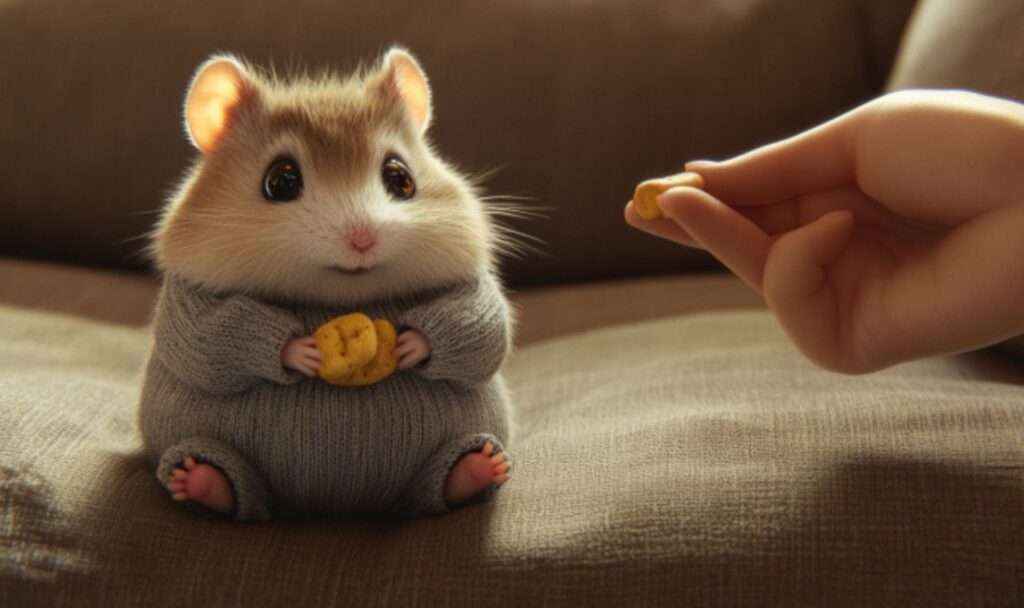
Treat balls are a fantastic way to encourage natural foraging behaviors and self-motivated exercise, but not all hamsters will understand how to use them right away. Some may take to them instantly, while others need time and encouragement. A gradual introduction ensures that your hamster sees the treat ball as a fun and rewarding challenge rather than a confusing or frustrating object.
Choosing the Right Treats
The key to a successful treat ball experience is using the right type and amount of treats. Since the goal is to keep your hamster engaged, it’s important to choose small, healthy treats that easily fit inside the ball and roll out smoothly.
Some of the best treats for encouraging play include:
- Seeds (sunflower seeds, pumpkin seeds, flaxseeds) – These are lightweight and easy for hamsters to retrieve.
- Dried fruits (small pieces of dried apple, banana, or cranberry) – These add variety and a natural sweetness that many hamsters love.
- Mealworms (dried or live) – A high-protein option, particularly appealing to hamsters that enjoy insect-based treats.
Avoid overloading the treat ball with too many snacks. If too many treats fall out too easily, the ball becomes less of a challenge, and your hamster may lose interest quickly. Instead, start with just a few treats and adjust the difficulty as your hamster becomes more skilled. This will keep the game engaging and prevent your pet from consuming too many treats in one sitting.
Step-by-Step Training Process
Not all hamsters will immediately understand how a treat ball works, so a gradual introduction can help them feel comfortable and motivated.
- Start with a stationary ball – Place the treat ball in your hamster’s enclosure without rolling it. Let them sniff, nudge, and explore it at their own pace. If necessary, add a few loose treats around the ball to create curiosity.
- Demonstrate movement – Gently roll the ball in front of your hamster so they can see that treats fall out when it moves. If your hamster is hesitant, you can push it slightly toward them to encourage interaction.
- Let them experiment – Once your hamster starts nudging or rolling the ball, allow them to figure out how it works. Some hamsters will push it right away, while others may take a few tries before realizing they need to move it to get the treats.
- Gradually increase the challenge – If your hamster quickly gets the hang of it, try adjusting the ball’s openings to make the treats harder to access. This will keep the game engaging and prevent boredom.
Patience is key when introducing a new toy. Some hamsters may take longer to show interest, so offering encouragement and praise (in the form of treats) can help build positive associations with the treat ball.
Troubleshooting Common Issues
If your hamster ignores the treat ball, don’t worry—some need extra motivation to get started. Try these solutions:
- Use a higher-value treat – If your hamster isn’t interested, switch to a more enticing snack like a sunflower seed or a small piece of dried fruit.
- Make it easier – Start with a treat ball that has a large opening so treats fall out easily. Once your hamster gets the idea, you can gradually make it more challenging.
- Place treats outside the ball – If your hamster is hesitant, scatter a few treats near the ball so they associate it with food.
For hamsters that quickly figure out the game, you can increase the difficulty by adjusting the opening size or using slightly heavier treats that require more effort to roll out. This ensures the toy remains a stimulating challenge over time.
It’s also important to recognize when to remove the ball. If your hamster becomes frustrated or excessively chews on the ball instead of rolling it, they may not understand how it works or may be losing interest. Treat balls should be a fun activity, so always monitor your hamster’s response and adjust accordingly.
Best Practices for Using Treat Balls Safely
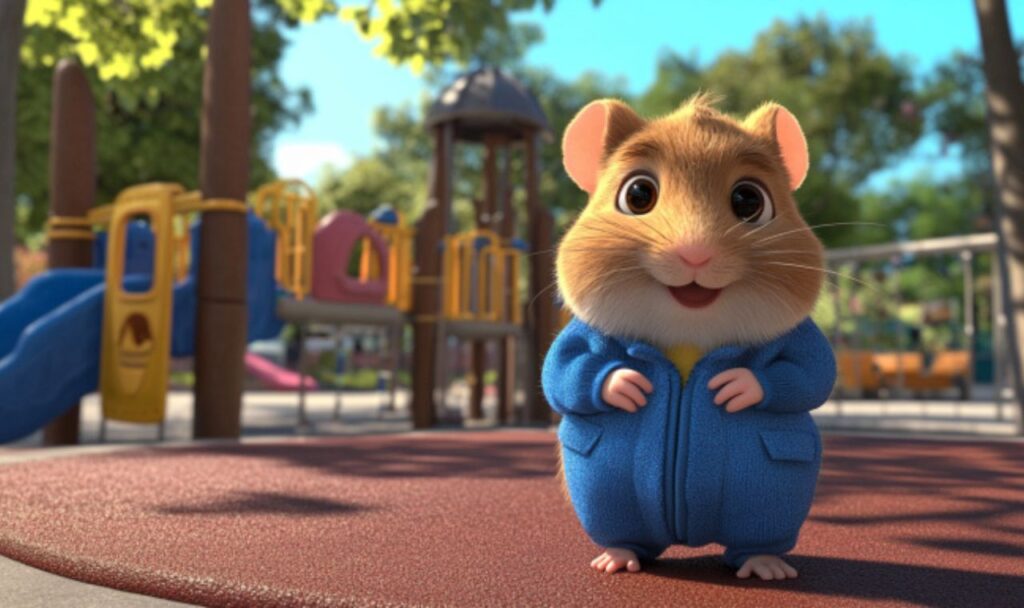
Treat balls are an excellent way to encourage self-motivated exercise and mental stimulation, but like any enrichment tool, they should be used properly to ensure your hamster’s safety and well-being. Monitoring playtime, maintaining cleanliness, and keeping the experience fresh with toy rotation are all key factors in making treat balls a fun and beneficial part of your hamster’s routine.
Monitoring Playtime
While treat balls encourage natural foraging and movement, hamsters should not have unlimited access to them. A hamster that plays with a treat ball for too long may become frustrated, exhausted, or overfed, especially if treats are dispensed too easily.
A good rule of thumb is to allow treat ball play for 10 to 20 minutes at a time, depending on how engaged your hamster is. Some hamsters may lose interest after a few minutes, while others may continue rolling the ball until all treats are gone. Observing your hamster’s behavior can help determine the ideal duration for each session.
Supervision is also important when introducing a treat ball, especially for hamsters that are new to it. This ensures they are using it correctly and not becoming stressed or overly fixated on the ball. Signs of frustration include excessive biting, ignoring other activities, or frantic rolling without eating the treats. If your hamster appears agitated, remove the ball and try again later with an easier setup.
Keeping the Treat Ball Clean
Like any toy that comes into contact with food, treat balls should be cleaned regularly to prevent bacteria buildup and food residue from sticking inside. A dirty treat ball can attract mold and bacteria, which can be harmful to your hamster’s health.
Cleaning methods depend on the material of the treat ball:
- Plastic treat balls: Wash with warm, soapy water and rinse thoroughly. Avoid using harsh chemicals that could leave residues.
- Wooden treat balls: Wipe down with a damp cloth and let them air dry completely. Avoid soaking in water, as this can cause the wood to swell or develop mold.
- Silicone treat balls: These can often be hand-washed or placed in a dishwasher if they are labeled as dishwasher-safe.
To keep your hamster’s treat ball safe and hygienic, clean it at least once or twice a week, or more frequently if treats with moisture (like fresh fruit) are used. Allow the ball to dry completely before returning it to your hamster’s enclosure.
Rotating Toys for Maximum Engagement
Using the same toy too often can lead to boredom and decreased interest. While treat balls are a great source of enrichment, they should not be the only interactive toy in your hamster’s environment.
To keep things exciting, alternate the treat ball with other foraging toys, such as:
- Small cardboard puzzle feeders
- Hanging treat holders
- Hidden food in shredded bedding or tunnels
Another trick to maintain interest is hiding the treat ball for a few days and reintroducing it later. This creates a sense of novelty, making it more exciting for your hamster when they see it again. You can also change the types of treats inside the ball to keep them guessing and motivated to play.
By using treat balls strategically and balancing them with other forms of enrichment, you ensure that your hamster stays active, engaged, and mentally stimulated without becoming overly dependent on one type of toy.
Hannah’s Training Tactics
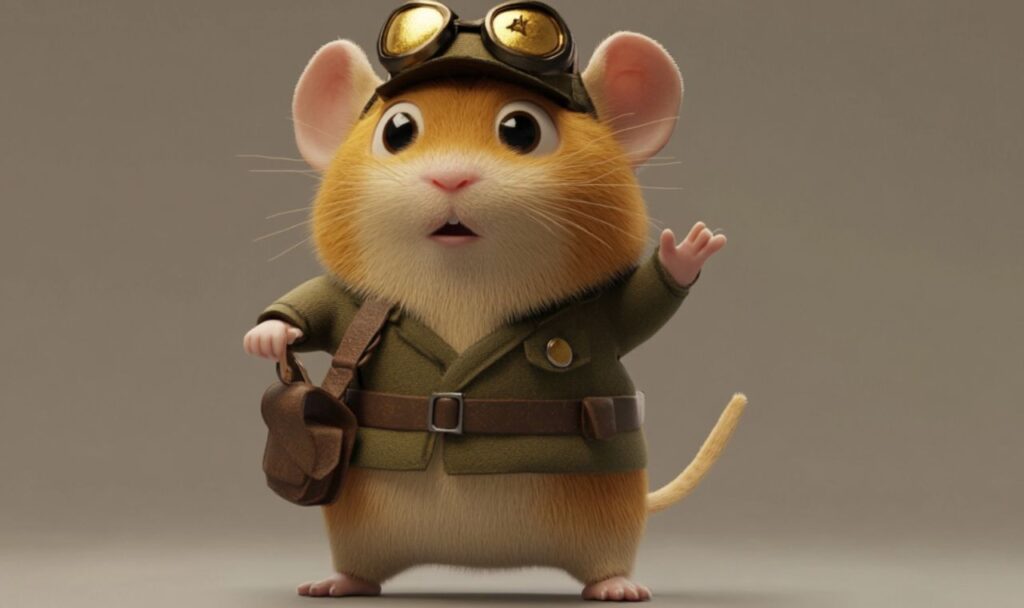
Using a treat ball is a fantastic way to encourage your hamster’s natural foraging instincts and keep them active, but a few simple training tactics can make the experience even more rewarding. Here are some quick, actionable tips to ensure that your hamster gets the most out of their treat ball sessions.
Start Simple
If your hamster has never used a treat ball before, it’s best to start with an easy-to-use design. A clear plastic ball with a large opening allows your hamster to see and smell the treats inside, making it easier for them to understand the game.
To encourage interaction, place a few loose treats near the ball so your hamster associates it with food. Then, gently roll the ball to demonstrate how movement causes treats to fall out. Some hamsters will pick up on this right away, while others may need a little more time to figure it out.
Gradually Increase Difficulty
Once your hamster is comfortable using the treat ball, you can increase the challenge to keep them engaged. Many treat balls come with adjustable openings, allowing you to make treats harder to access. Start by making the opening slightly smaller so your hamster has to work a little more for each reward.
If your treat ball doesn’t have adjustable settings, you can modify the difficulty by:
- Using slightly larger treats that take longer to fall out.
- Placing a small piece of bedding inside to slow the movement of treats.
- Letting your hamster play on a rug or bedding-covered surface, which makes rolling the ball more effortful.
Gradual progression helps prevent boredom while keeping the experience fun and rewarding.
Watch for Fatigue
While treat balls are a great form of exercise, too much playtime can lead to exhaustion. Limit each session to around 10 to 20 minutes, depending on your hamster’s energy levels and interest.
Signs that your hamster may be getting tired include:
- Slower movements or decreased interest in the ball.
- Pausing frequently and grooming instead of continuing to play.
- Attempting to store treats rather than eating or playing.
If you notice these behaviors, it’s time to remove the treat ball and let your hamster rest. Overuse of a treat ball can also lead to frustration, so keeping sessions short ensures that your hamster stays engaged without becoming overwhelmed.
Keep It Exciting
Hamsters can lose interest in repetitive activities, so switch things up to maintain enthusiasm. One of the easiest ways to do this is by changing the treats inside the ball. If your hamster usually gets sunflower seeds, try switching to dried fruits, mealworms, or pieces of nuts. The new scent and texture will reignite curiosity and motivation.
You can also make the experience more engaging by:
- Rotating different types of foraging toys alongside the treat ball.
- Placing the treat ball in a different part of the enclosure to create a new challenge.
- Hiding the ball for a few days and then bringing it back for a fresh experience.
Small changes like these can make a big difference in keeping your hamster interested in their treat ball.
Have Fun!
At the end of the day, the goal is to make treat ball playtime a fun and enriching experience for your hamster. Watching them nudge, chase, and roll the ball around is not only adorable but also a great way to ensure they stay mentally and physically active.
If your hamster doesn’t take to the treat ball right away, don’t worry—every hamster learns at their own pace. With a little patience and the right motivation, they’ll soon be enjoying their mini workout while earning delicious rewards. Enjoy the process, and have fun watching your furry friend explore their new favorite game!
A Rolling Success for a Happy, Healthy Hamster

Treat balls are more than just a fun toy—they’re a valuable tool for encouraging self-motivated exercise, mental stimulation, and natural foraging behavior. By turning snack time into an interactive experience, treat balls help keep hamsters active, engaged, and healthier in the long run.
Introducing a treat ball to your hamster doesn’t have to be complicated. Starting with easy-to-access treats, gradually increasing difficulty, and monitoring playtime ensures that your furry friend enjoys the experience without frustration. Keeping things fresh by rotating toys and switching up treats will keep them eager to play again and again.
Every hamster has their own personality—some will excitedly chase their treat ball across the enclosure, while others may take their time figuring it out. With patience and encouragement, your hamster will learn to love the challenge, making treat ball play an enriching part of their daily routine. So go ahead, let the good times roll, and watch your tiny explorer enjoy the excitement of working for their favorite treats!

